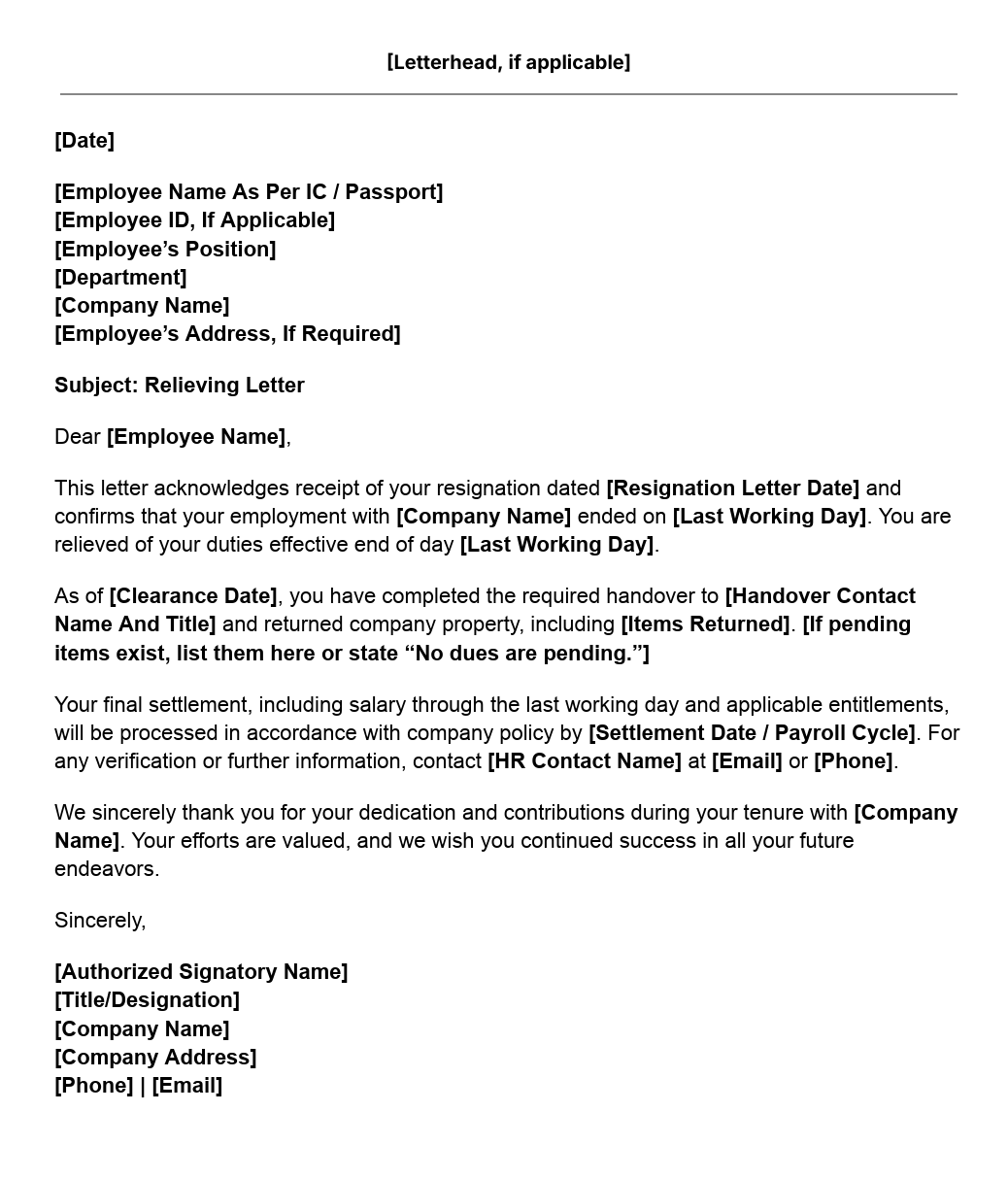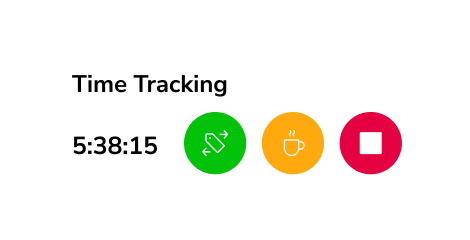Relieving Letter Template
Scroll down to download a free relieving letter template that you can customize according to your company’s requirements.
A relieving letter is an official document issued to an employee once their resignation or separation has been processed. It confirms the last working day, acknowledges that duties have been handed over, and states that the employee has been formally released from responsibilities. Unlike a resignation acceptance letter, which confirms that the resignation was received, a relieving letter is issued at the end of the notice period and serves as proof that the employee has completed all exit formalities. What Is a Relieving Letter?
A relieving letter is important because it provides closure to the employment relationship. It assures the new employer that the individual has no pending obligations with their previous company and has completed their handover properly. It also serves as a key HR record for both payroll and compliance. Employees often need a relieving letter when joining a new company, especially if background checks or verification processes are in place. Without it, delays in onboarding can occur. Why Is a Relieving Letter Important?
A standard relieving letter usually covers the following: This structure ensures both the company and employee have a clear record of the separation. What’s Included in a Relieving Letter?
Is a Relieving Letter the Same as an Experience Letter?
No. A relieving letter confirms release from employment, while an experience letter outlines the employee’s role, skills, and tenure.
Why Do New Employers Ask for a Relieving Letter?
It acts as proof that the employee has left their previous company properly and is free to take up new employment.
Can an Employer Deny a Relieving Letter?
Yes. An employer may refuse to issue a relieving letter if the employee has not served the required notice period, returned company property, or cleared pending dues.
Download our free relieving letter below.

Jibble’s free relieving letter template


